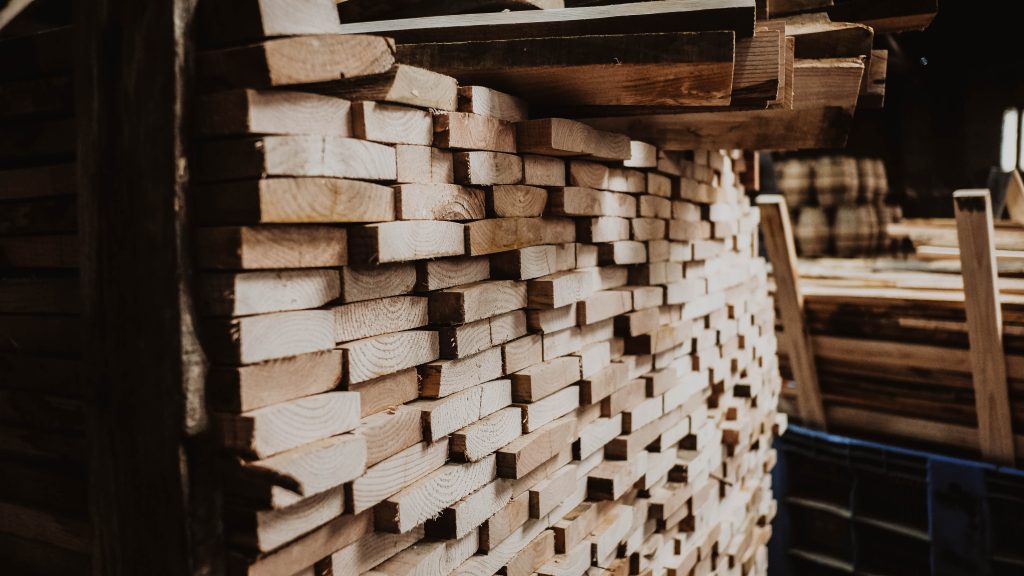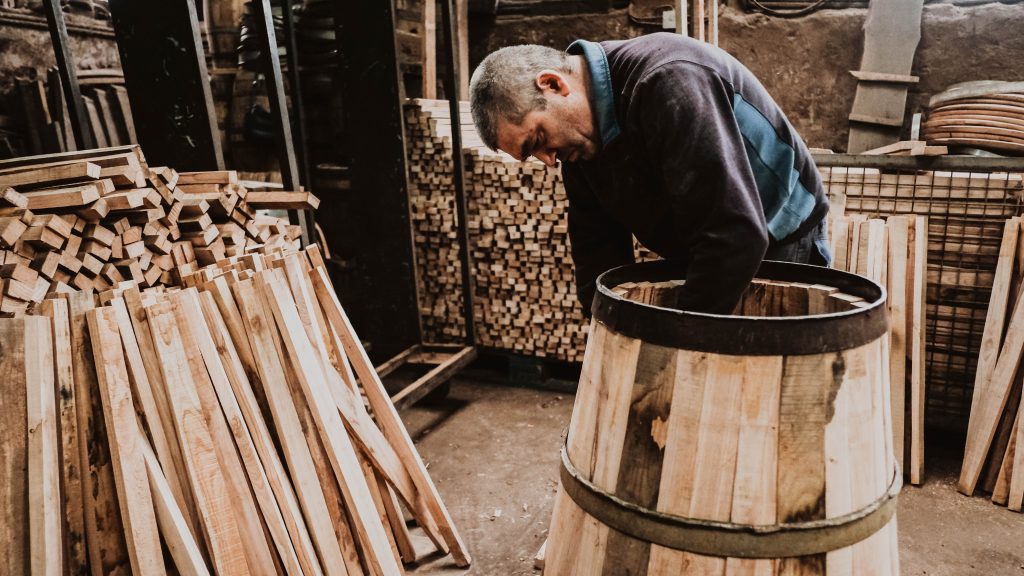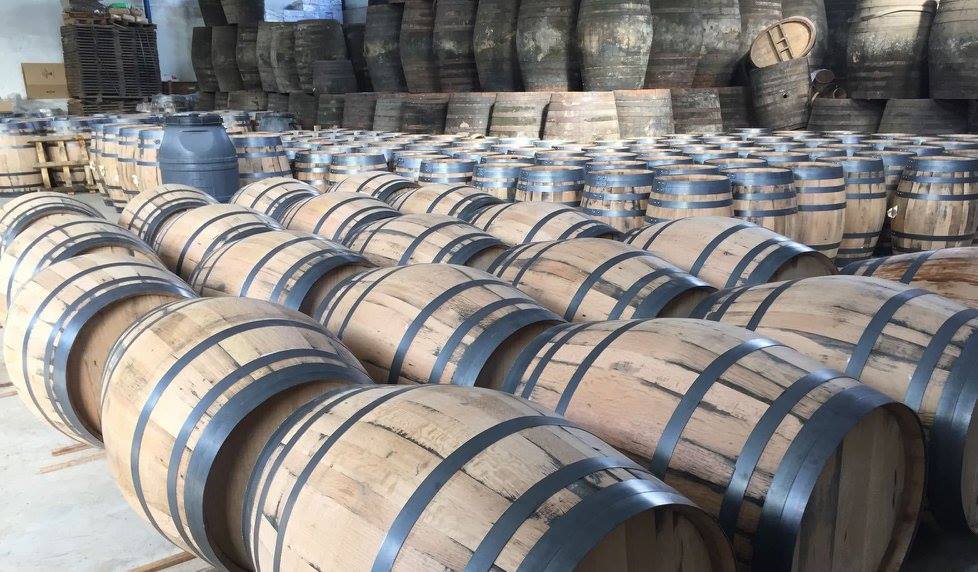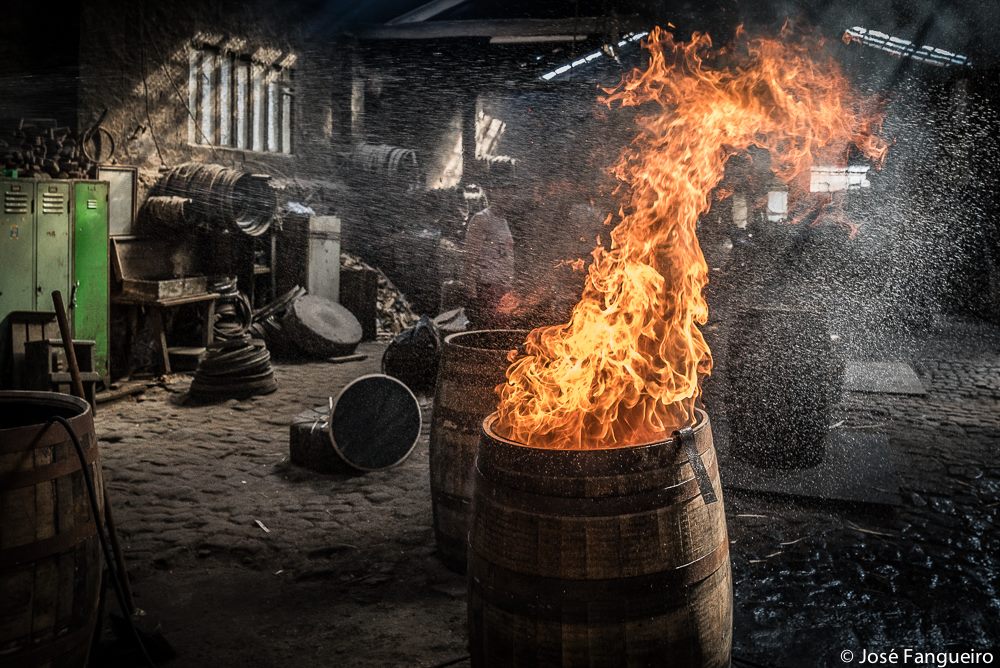in this post we are going to look at the reasons for seasoning oak before it is used to make barrels. Here at our cooperage we used to have our own saw mill to cut the oak into planks, but this work is now done to specialist saw mills. So we buy our wood as planks, cut to different sizes, with a rectangular profile (actually staves for barrels have to be cut in a very specific way (the quarter cut), which makes sure that the growth rings are aligned to prevent the staves from leaking) .
Once we receive the planks we organize them on pallets in a crisscross formation that allows air to circulate between the total surface area of the staves, then we put them out in our yard for at least a year. Here the oak will be subject to all that mother nature has to throw at them – rain, shine, cold and hot – which is the process of seasoning. This will turn the green wood that we initially received into seasoned oak fit to make barrels with. We work with European, French and American oak: there is a clear difference in the characteristics of American and European oak which we examine in this post. French oak is really just a subset of European oak and is traditionally where the very highest quality of oak comes from.
The process of seasoning has two functions – first it makes the oak pliable so that we can bend it to make barrels without splintering; second it helps to release all the mysterious flavours that have been hidden away in the oak waiting to be released (first by the seasoning and then by the toast/char).
The oak in a barrel is responsible for much of the flavour that the wine, whisky or whatever is aged in it gains – the oak staves will allow a small amount of oxygen to enter and of course there are the incredible range of flavours that the wood itself can release. The exact proves by which seasoning helps to release these flavours is poorly understood, but it seems that naturally occurring molds and enzymes help to liberate some of these flavours and is a reason that kiln drying staves may not be such a good alternative to natural seasoning. What is certain is that seasoning the wood helps to smoothen out the raw green woody flavours and reduce the harshness/bitterness of tanins & phenolics.

Once the oak staves have been seasoned in the Portuguese weather, then we have to give the staves their arched and bowed profile, so that they will bend to form the barrel shape. Part of the bending process involves sitting the barrels over a small fire, which will toast the oak and then when the barrel it will be given a burst of much hotter flames (charring the barrel). It is the combination of seasoning with toasting/charring which will convert the rough flavours of the green oak into the incredibly subtle flavours that we are looking for. Quite how the incredibly complex processes of seasoning and toasting/charring is still part of the mystery of using oak barrels to age wine and spirits!



